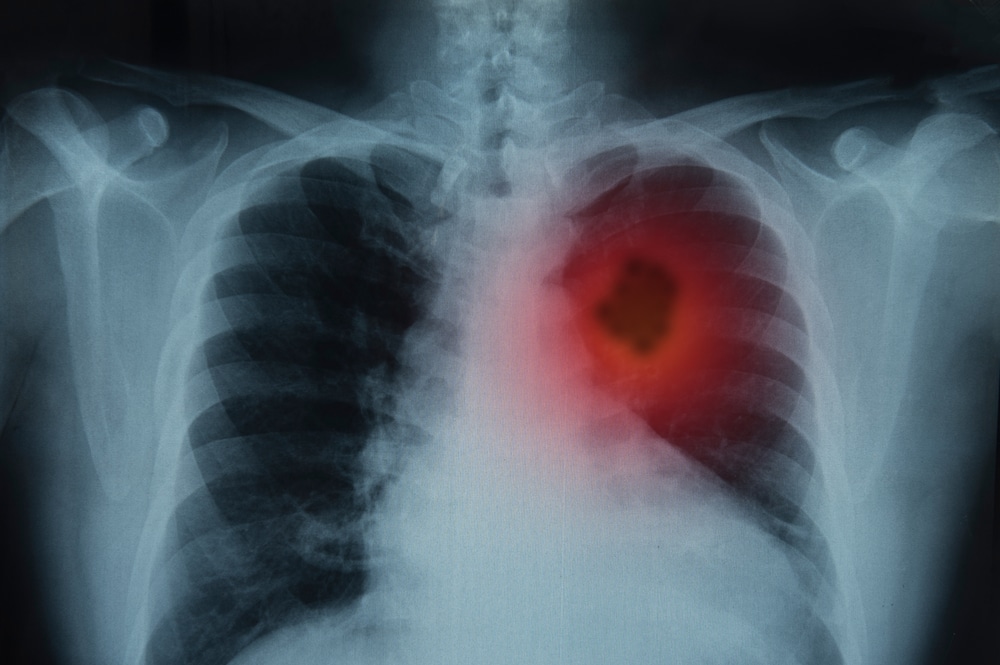A medication used to treat non-small cell lung carcinomas (NSCLC) with specific mutations has demonstrated a 49% objective response rate (ORR) in patients.
AstraZeneca and HUTCHMED announced that TAGRISSO Plus Savolitinib – a third generation epidermal growth factor receptor (EGFR) tyrosine kinase inhibitor – was helping patients with high levels of mesenchymal epithelial transition (MET).
The results are from the preliminary SAVANNAH phase 2 trial showed the highest ORR was seen in patients with high levels of MET who had not been treated with chemotherapy. In patients with whose tumors did not show high levels of MET, the ORR was 9%.
Disease progression
Myung-Ju Ahn, principal investigator in the SAVANNAH phase 2 trial, said: “Acquired resistance to targeted therapy and disease progression are difficult realities for most patients with EGFR-mutated NSCLC.
“These preliminary SAVANNAH results potentially support a novel approach for identifying patients with MET overexpression and/or amplification who are most likely to benefit from a MET-directed therapy, like savolitinib. They also suggest that with the right biomarker testing strategy, MET may be a more prevalent target among resistant patients than previously understood, supporting further investigation of the osimertinib plus savolitinib regimen.”
Savolitinib, marketed in China under the brand name ORPATHYS, is an oral, potent and selective MET tyrosine kinase inhibitor (TKI) being jointly developed and commercialized by AstraZeneca and HUTCHMED.
Resistance
While EGFR-targeted therapy can provide a durable survival benefit to patients with EGFRm NSCLC, most will eventually develop resistance to their treatment, with MET being the most common resistance biomarker.
Among patients screened for enrolment in SAVANNAH, all of whom experienced disease progression on TAGRISSO, 62% had tumors with MET overexpression and/or amplification, and more than one-third (34%) met the defined high MET level cut-off.
Cristian Massacesi, chief medical officer, at AstraZeneca said: “The current standard of care for patients with EGFR-mutated lung cancer who progress on targeted treatment is chemotherapy. The results from SAVANNAH suggest savolitinib added to TAGRISSO at the time of disease progression could possibly provide these biomarker-selected patients with a potentially less toxic, more effective treatment option.
“We look forward to better understanding the potential of the TAGRISSO plus savolitinib regimen in this trial and in the SAFFRON phase 3 trial.”
Cancer cells
In this analysis, patients’ MET overexpression and/or amplification levels were determined by two tests: immunohistochemistry (IHC), which detects if cancer cells have a particular protein or marker on their surface, and fluorescence in situ hybridization (FISH), which detects a specific DNA sequence from cancer cells.
All patients in this analysis had at least IHC50+ and/or FISH5+, and were treated with savolitinib 300mg once daily added to TAGRISSO 80mg once daily following disease progression on TAGRISSO alone.
Weiguo Su, chief executive officer at HUTCHMED, said: “It is encouraging to see the savolitinib and TAGRISSO combination regimen progress into a global phase 3 study, SAFFRON, with a well-supported patient selection strategy that could benefit more patients than previously recognized.
“The preliminary results of the SAVANNAH study also affirm the role of molecular testing prior to initiating subsequent treatment for NSCLC patients who experience disease progression on an EGFR-targeted therapy. We are aligned in pursuing a selective, patient-centric approach in development efforts for savolitinib in this setting.”





